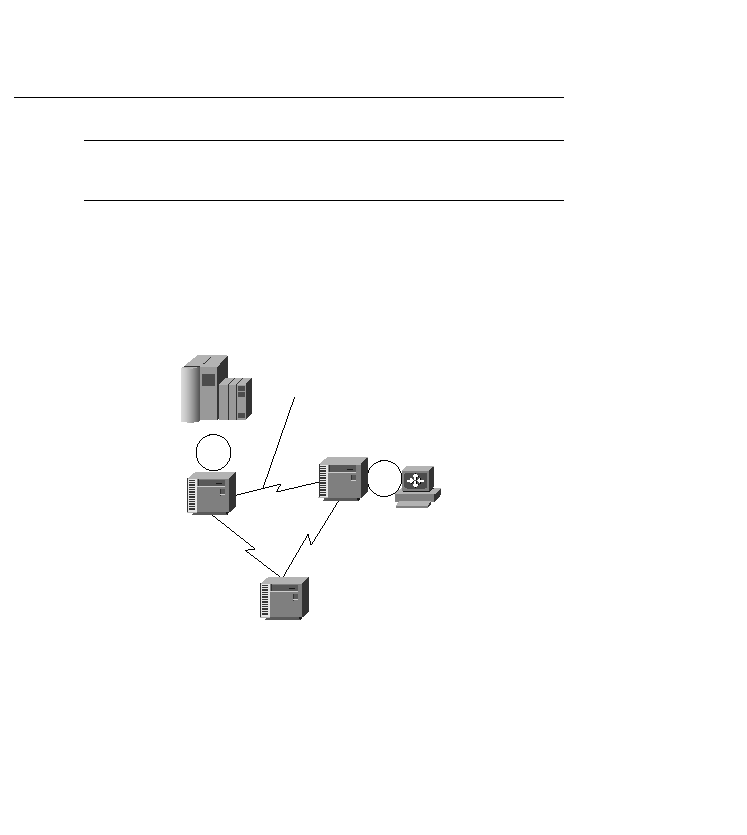
remote site connectivity from the central site would be a good idea. Be concerned about the
amount of memory needed to implement APPN. It can be substantial.
if the SDLC link between FEP A and FEP B fails, the SNA traffic will not reroute around FEP
A and FEP C. If you have an IP network and you lose the wide-area link, IP will route around
it. If the network converges quickly, SNA won't notice. There is one source of vulnerability: If
you set up a tunnel between two routers and you lose that tunnel, you have to reestablish the
session over the redundant link, possibly deleting the user's previously established session.
cluster controllers across a multiprotocol backbone or any HDLC-based protocol, such as X.25.
It also can be encapsulated into IP packets. With the IBM product line, STUN encapsulates both
the FID4 and FID2 SNA path information units. In Figure 13-7, the FID4 frames between the